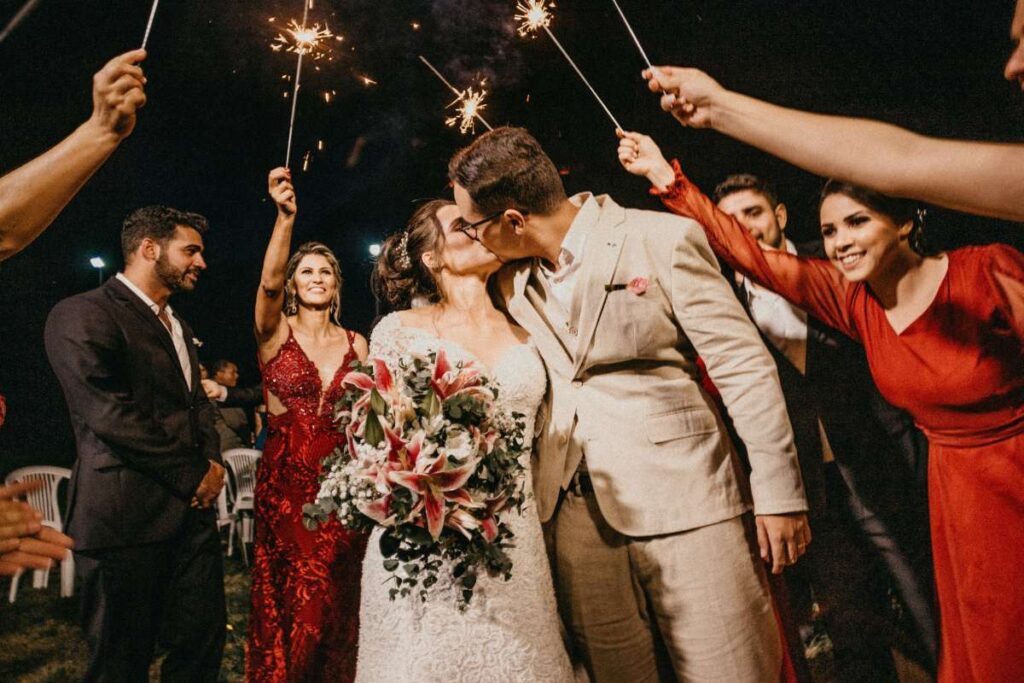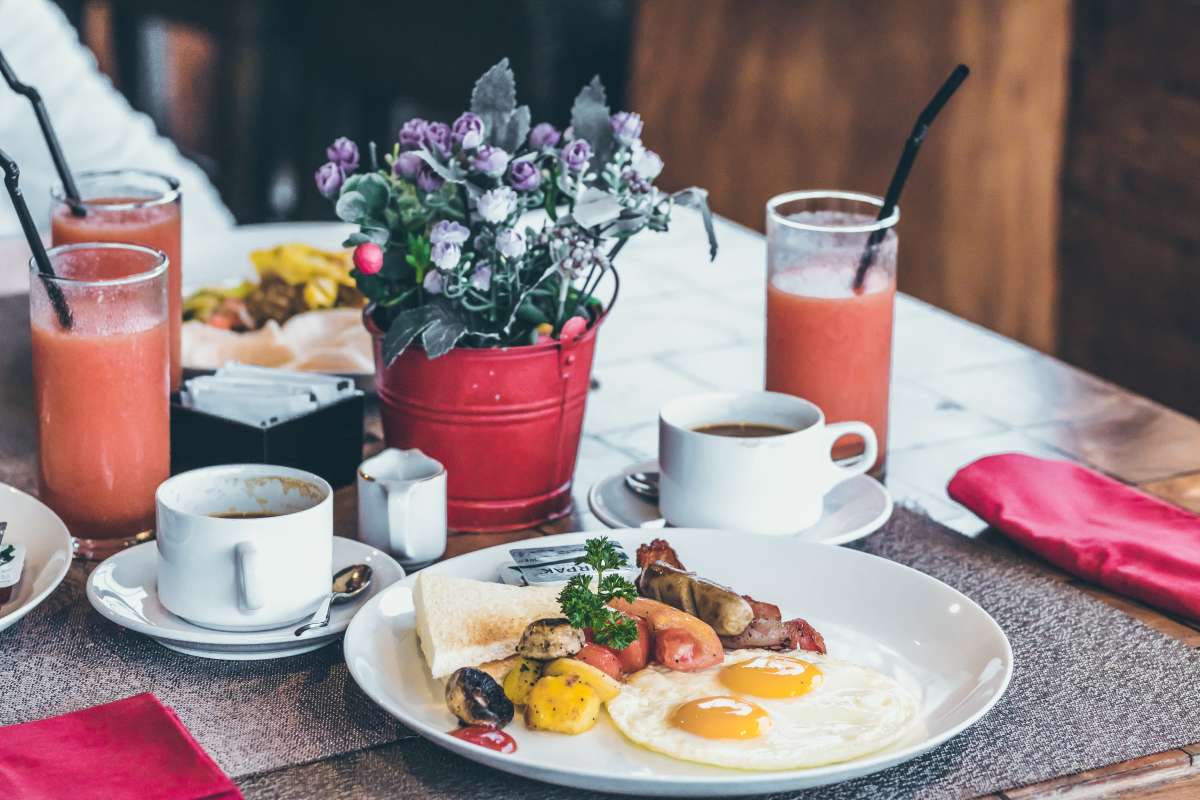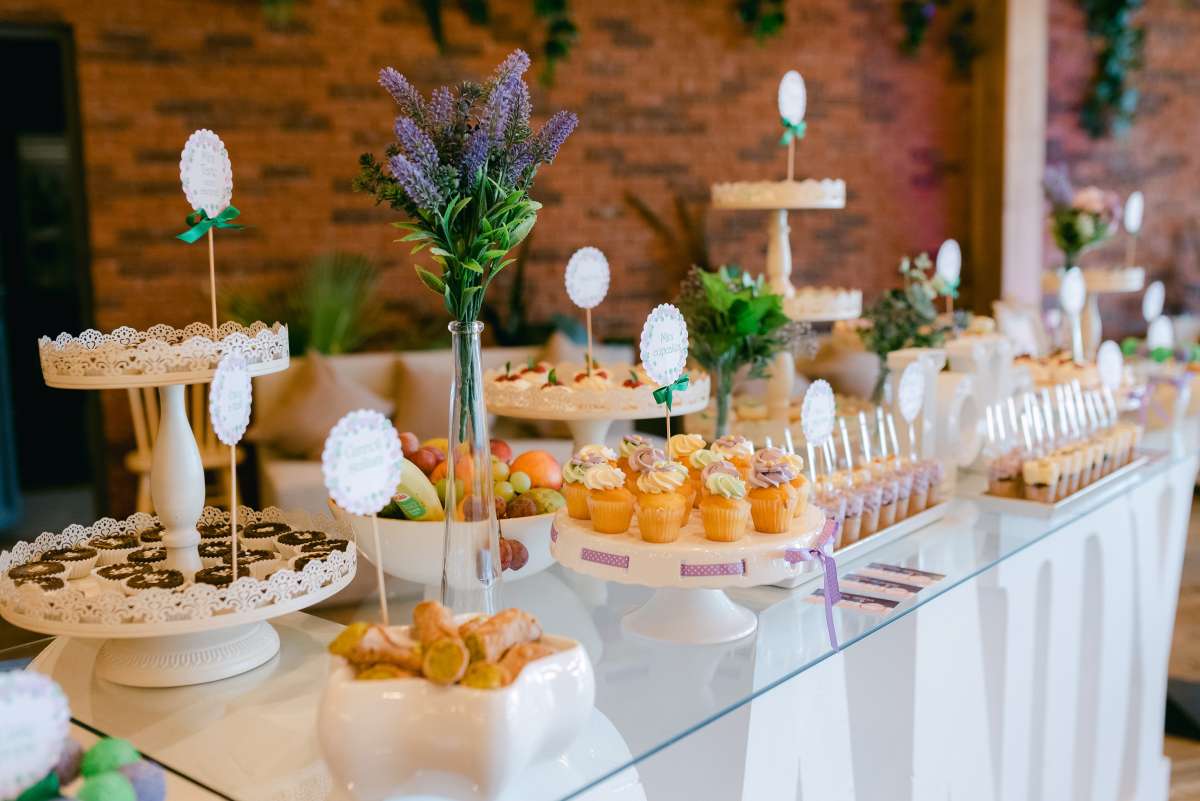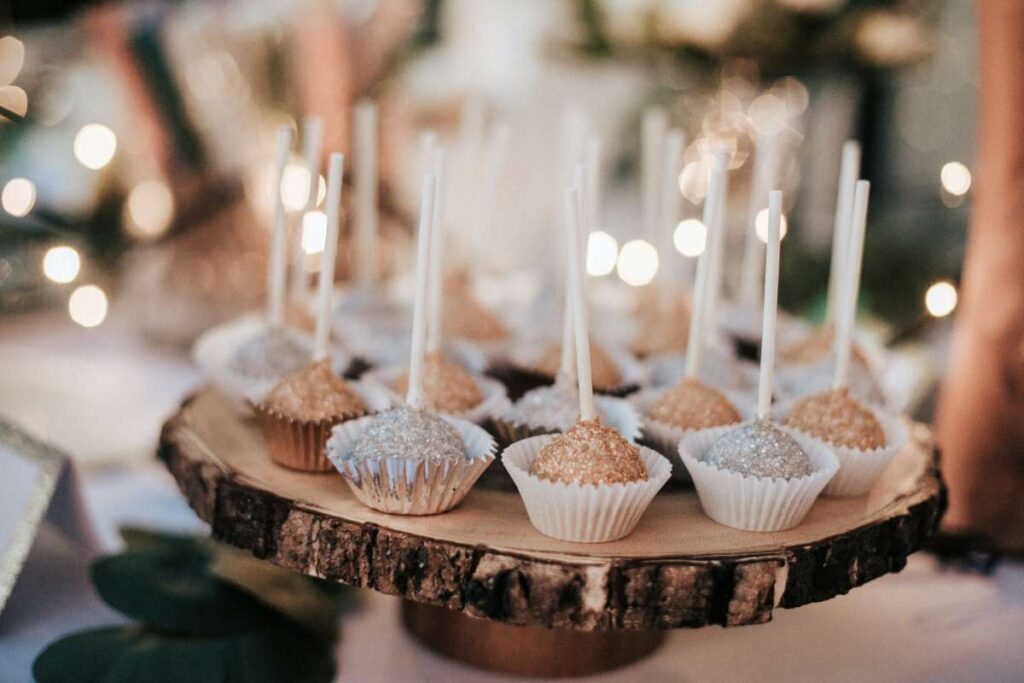In the realm of photography, capturing appetising food images is a formidable challenge. Like a blank canvas, you need to start with nothing if you want to make anything new. Step by step, the perfect combination of reality and art is built into the shot. It all boils down to a series of options.
The photographer has done a beautiful job of arranging the items. We know how difficult it is to get started. You're in charge of everything from preparation to presentation. Once you've mastered the ins and outs of camera operation, what next? We have been where you are, and to some extent, we still are. So, how can one go beyond the basics to make more interesting food photographs? You clearly spent some serious time on the narrative.
You're regaling us with anecdotes, just as any photographer would, be it about the celebration that followed the formulation of the perfect cocktail or the farm-to-table roast chicken you made from scratch. While this may seem like a lot of work, especially for longer or more complicated stories, most shoots are actually pretty straightforward.

The fundamentals, Instagram and social media food photography, the best equipment, lighting, restaurant photography, inspiration, composition, editing, commercial food photography advice, working with others, and maintaining your health as a food photographer.
Among chefs, there is a well-known proverb that goes something like, "you eat with your eyes first." The visual appeal of a meal is important since it is the first sensory criterion we employ when making decisions about the foods we eat. It's for this reason that food photography is one of the most popular genres on social media and why we find ourselves subconsciously drawn to colourful, artfully presented meals.
Taking photos of appetising food is a lot more difficult than it looks. You'll need not only an appealing food before you, but also the know-how to make it look appetising in an odourless, two-dimensional manner that does it justice. Getting the food ready, plating it, picking the right lighting, and editing the final product are just a few of the many challenges that come with food photography. We have compiled a comprehensive list of Melbourne wedding photographers for your perusal.
These food photography ideas will make it easy for anyone, from a seasoned pro to a rising novice who wants to broaden the scope of their photography website, to become a master of this niche.
Looking for the best Wedding Photographer in Melbourne? Check out our ultimate list here.
Food Photography Tips for Capturing Mouth-Watering Images
Choose the Right Gear.
When beginning something new, the first question that may photography discipline is the type of camera you will need. If such was a concern of yours, rest assured that any modern electronic gadget will do the trick.
Since you'll be working with a static subject that can be moved around at will and because you'll likely be shooting in a studio, you'll have more control over the lighting. Having complete control over your camera settings is all that's required to get the shots you want.
If your smartphone supports swapping lenses, invest in a high-quality prime lens. Due to their superior speed and image quality, these lenses are highly sought after by photographers. And, as was already indicated, you won't require zoom because you'll have total command over the action.
Consume Beautiful Imagery
If you're struggling to come up with new ideas for your food photography, spending just a few minutes a day looking at the work of other food photographers will help. You may achieve this in a number of ways, one of the simplest being to follow Instagram photography accounts that specialise in such images. Seek out the most talked-about photography hashtags on social media if you're not sure where to look for these profiles.
Write a Brief
If you want to make a living as a photographer, you should practise crafting comprehensive briefs. Although they are typically employed when dealing with customers, you can greatly benefit from incorporating them into the process of completing your own projects. You should include information about your intended readers, the purpose of the project, the voice you'll use, and the channels via which you'll be publishing in this document.
Drawing out a few potential shots that sum up your photo shoot's objectives is also a good idea. Make the most of your shooting time and more easily realise your vision with this.
Spend some time investigating prevalent qualities in images used for this purpose, and write down some notes to base your designs and on-set decisions on, before reaching out to brands for potential partnerships or selling stock photos.
Invest in a Good Tripod
A tripod is one of the most ubiquitous and widely used camera accessories, regardless of the type of photography being practised. They allow you to steady the camera and get a better look at your composition before you snap the picture, reducing the likelihood of blurry photos. In addition, they allow for the realisation of previously unrealised creative photography ideas.
Search for Natural Light
The use of natural light is highly recommended while photographing food. However, it does suggest that you should always aim for natural, soft lighting, rather than just using whatever light happens to be available, whether indoors or out. The finest lighting for your composition will come from a big window. and shoot during the photography golden hour or an overcast day to avoid harsh shadows.
It is possible, with the correct lighting equipment and competent operators, to create an environment similar to this one in a studio. If you decide to go this route, you should begin with a single morning take and utilise reflectors to light the scene as though sunlight were streaming in through a window.
Keep it Fresh

Photographing food correctly means making it look like it was made right before the shutter was pressed. As a result, never eat anything that has been exposed to water or that has gone bad in any way. Any flaw, no matter how minor, might drive away potential customers.
To avoid this, make sure to acquire your ingredients (especially vegetables) as near to the shooting as possible and to keep in mind their respective expiration dates. A basic piece of advice for food photographers is to keep their produce in the fridge under a damp napkin and to only wash it right before plating. This will give them the appearance of being freshly sprayed with water.
It's best to wait to plate any foods that require cooking or that include sauces until you're ready to start snapping photos. Using props to set up a composition that needs minimal tweaking once the dish is ready is highly advised. If you don't ask for the dressing to be served on the side, your pictures could end up appearing like the salad you ordered for lunch.
Here at Boutique Events Group, we have compiled an exclusive list of Melbourne Wedding Photographers to help capture your special day
Work With a Food Stylist
People often argue that in order to succeed, it is necessary to put oneself in the company of other successful people. When establishing a photography career, this entails teaming up with skilled experts from other disciplines who can improve the quality of your photographs. If you were a fashion photographer, instead of trying to do everything yourself, you might look into hiring a professional stylist and make-up artist.
In food photography, this would be analogous to employing a photographer who also works as the chef and photographer. While that may achieve some limited success, it will make the task significantly more challenging and will almost never exceed the standards of joint endeavours.
Working with a food stylist will help you nail the presentation of your dish so that your audience gets the full effect of your brilliant idea. Any and all colours, materials, decorations, and tableware count. Even the most unappetising greens, like spinach, can be made to look appetising by a stylist's expert hand.
Use Props
Food isn't the only thing that may be used as a prop. Your compositions will have more impact and reflect your own style if you use accessories. Food photography props typically have some sort of connection to the dish's components, provenance, or preparation. However, other props like flowers, books, or fabrics can also help the overall appearance of the shot.
It's important that any supplementary material in the composition works to bolster the central idea. They shouldn't steal the show from the dish you're photographing, and they shouldn't get in the way, either.
Create an Appealing Composition
While your grandma may have cautioned you a thousand times not to toy with your food, the following food photography advice asks for the exact opposite. To have fun with your meal, feel free to experiment with different combinations and placements of edible and inedible items. Consider the plate as a blank canvas, and utilise the many photography composition guidelines to direct the viewer's gaze around the frame and the dish.
You should spend some time before the shoot experimenting with the food's reaction to varied lighting and camera settings. Some foods, when exposed to high or low temperatures, may alter appearance, including colour and size. Knowing this ahead of time will allow you to make fewer blunders and give you more time to think of ways to make the most of the situation.
Experiment With Angles

The optimal angle to photograph a meal will vary from dish to dish, in contrast to portrait photography where there are tried and true methods for getting the greatest shot every time. Although straight-on shots of some dishes look great, some are better captured from above. They all have their good and bad sides, just like people.
After the meal has been plated and the composition has been established, try shooting from a variety of perspectives to find the most flattering shot. Common viewpoints include 45 degrees (from a standing position), 90 degrees (from a bird's eye view), and table level (when the camera is placed directly in front of the meal). This can help you identify the most compelling stance, sometimes known as the "hero perspective."
Pay Attention to Colour.
In food photography, colour is just as crucial as lighting. It's possible that black-and-white photos are never used in any other kind of photography. After all, when food loses its colour, it no longer looks appetising.
It's possible to make the colours of your food pop in two primary ways: by using neutral tones or by using colours that contrast with one another. Neutralising the main subject's surroundings with props and backgrounds will draw less attention to them and more to the meal itself. Color contrasts between the word and its background, on the other hand, produce lively dynamics that stimulate the eye and attract the observer into the image. Which option is best will be determined by the specifics of each photograph and its intended use.
Looking for a wedding photographer in Mornington Peninsula? Look no further, Boutique Events group has compiled an ultimate list of wedding photo companies to help you choose.
Tell a Story
Mastering the art of photographic narrative telling is crucial. While this may not have an obvious effect on the final product of your photography, it has a significant role in how your images are received. The point you wish to make should be established early on, preferably during brief development.
You can better arrange the shot, select the right objects, and settle on the right lighting if you have an idea of the story you want to convey. Imagine a hot cup of coffee on a dark table with nothing else around it. Now picture that same cup sitting next to a book and a window. Even though they all feature the same topic, the emotions evoked by these pictures couldn't be more different.
Include a Human Element
In relation to your audience feeling as like they are a part of the visuals you create, having people in the frame will provide them a point of reference. Anything from a cook preparing a meal to a family sharing a meal to a child snacking on an ice cream cone is all fair game.
You can help your audience feel more connected to the image you've composed by including a human figure, even if only in profile. It is standard practise in landscape photography to include human subjects since they can give a shot a feeling of depth, motion, and aesthetic appeal.
Strive for Minimalism
The food itself should always be the focal point of any food photography you do. As clear as it may seem today, once you start shooting, it's easy to become sidetracked by experimenting with different compositions and objects. Don't forget that everything here serves to complement and highlight your main topic rather than mask it.
If you look at enough works of fine art photography, you'll notice that most of them make use of negative space to give the subject room to breathe and draw the eye inside. Utilise this method in your own compositions.
Edit to Perfection
You wouldn't eat a raw potato, so why would anyone want to read your RAW photos. And Yes, that also applies to raw JPG files. These photos either go in your photo library waiting to be altered, or in your Instagram Stories where you can share time-sensitive or unfinished content with your followers.
You can make your photos really stand out and look great while still remaining true to life by using either paid or open-source photo editing tools. That means making any and all adjustments to white balance, brightness, contrast, saturation, and other aesthetic preferences that you have for your photographs.
Check out our extensive list of Wedding Photographers in Melbourne to help capture your special moments.
FAQs About Food Photography
Use a large aperture by setting a low f/stop like f/2.8 or f/4. Set the ISO as low as you can (100 or 200 is best) to make up for a large amount of light let in by the wide aperture.
Poor composition
Image composition is an art form in itself. Besides light, it's one of the most difficult aspects of food photography to master. It can take years for composition to become second nature to you.
Glycerin is one of the favourite ways to make food look good. For any food or dish that needs a shiny look to ensure appetite appeal, glycerin is the stock answer.
Tricks Food Photographers Use to Make Food Look Delicious
- Cardboard spacers add height to food.
- Motor oil is a syrup substitute that doesn't absorb into pancakes.
- Toothpicks hold ingredients in place.
- A makeup sponge can add height to a burger.
- Vegetable oil adds a juicy look to meat.
To avoid harsh shadows in your food photos, shoot on an overcast day or move your subject into a lightly shaded area. If you're shooting indoors and the sun is shining brightly through the window, use a semi-transparent white curtain to diffuse the light.
Conclusion
The art of photographing delicious-looking food is notoriously difficult. Follow these simple guidelines to elevate your food photography to the next level and tell more interesting stories. Instinctively, we're drawn to colourful, artistically presented meals, which makes food photography one of the most popular genres on social media. Looking at the work of other food photographers can help spark new ideas if you're having trouble coming up with your own. With these guidelines, anyone may quickly progress from novice to expert in this field.
Natural light is prefered wherever possible; yet, gentle, subtle illumination should be your goal. To avoid getting sick, never consume anything that has come into contact with water. Hiring a food stylist is the best way to ensure your finished dish looks as good as it tastes. You can use anything you like in terms of colour scheme, fabric, ornamentation, and dinnerware. With the help of a skilled stylist, even the most unappetising greens can be transformed into something more enticing.
As opposed to portrait photography, where there are tried and true ways for getting the best shot, the best angle to photograph a meal will vary depending on the food being photographed. Like any other type of photography, food photography relies heavily on colour as much as lighting. The main focus of any food photography should be the food itself. Including a human figure in your composition might help the viewer relate to the scene you've created. You can either store these images in your picture library until you're ready to edit them, or you can add them to your Instagram Stories.
Content Summary
- In the realm of photography, capturing appetising food images is a formidable challenge.
- The fundamentals, Instagram and social media food photography, the best equipment, lighting, restaurant photography, inspiration, composition, editing, commercial food photography advice, working with others, and maintaining your health as a food photographer.
- Taking photos of appetising food is a lot more difficult than it looks.
- Getting the food ready, plating it, picking the right lighting, and editing the final product are just a few of the many challenges that come with food photography.
- Seek out the most talked-about photography hashtags on social media if you're not sure where to look for these profiles.
- If you want to make a living as a photographer, you should practise crafting comprehensive briefs.
- Having complete control over your camera settings is all that's required to get the shots you want.
- If your smartphone supports swapping lenses, invest in a high-quality prime lens.
- A tripod is one of the most ubiquitous and widely used camera accessories, regardless of the type of photography being practised.
- The use of natural light is highly recommended while photographing food.
- The finest lighting for your composition will come from a big window.
- It is possible, with the correct lighting equipment and competent operators, to create an environment similar to this one in a studio.
- When establishing a photography career, this entails teaming up with skilled experts from other disciplines who can improve the quality of your photographs.
- Working with a food stylist will help you nail the presentation of your dish so that your audience gets the full effect of your brilliant idea.
- The optimal angle to photograph a meal will vary from dish to dish, in contrast to portrait photography where there are tried and true methods for getting the greatest shot every time.
- After the meal has been plated and the composition has been established, try shooting from a variety of perspectives to find the most flattering shot.
- In food photography, colour is just as crucial as lighting.
- Mastering the art of photographic narrative telling is crucial.
- You can better arrange the shot, select the right objects, and settle on the right lighting if you have an idea of the story you want to convey.
- In relation to your audience feeling as like they are a part of the visuals you create, having people in the frame will provide them a point of reference.
- You can help your audience feel more connected to the image you've composed by including a human figure, even if only in profile.
- The food itself should always be the focal point of any food photography you do.
- Utilise this method in your own compositions.
- You can make your photos really stand out and look great while still remaining true to life by using either paid or open-source photo editing tools.

